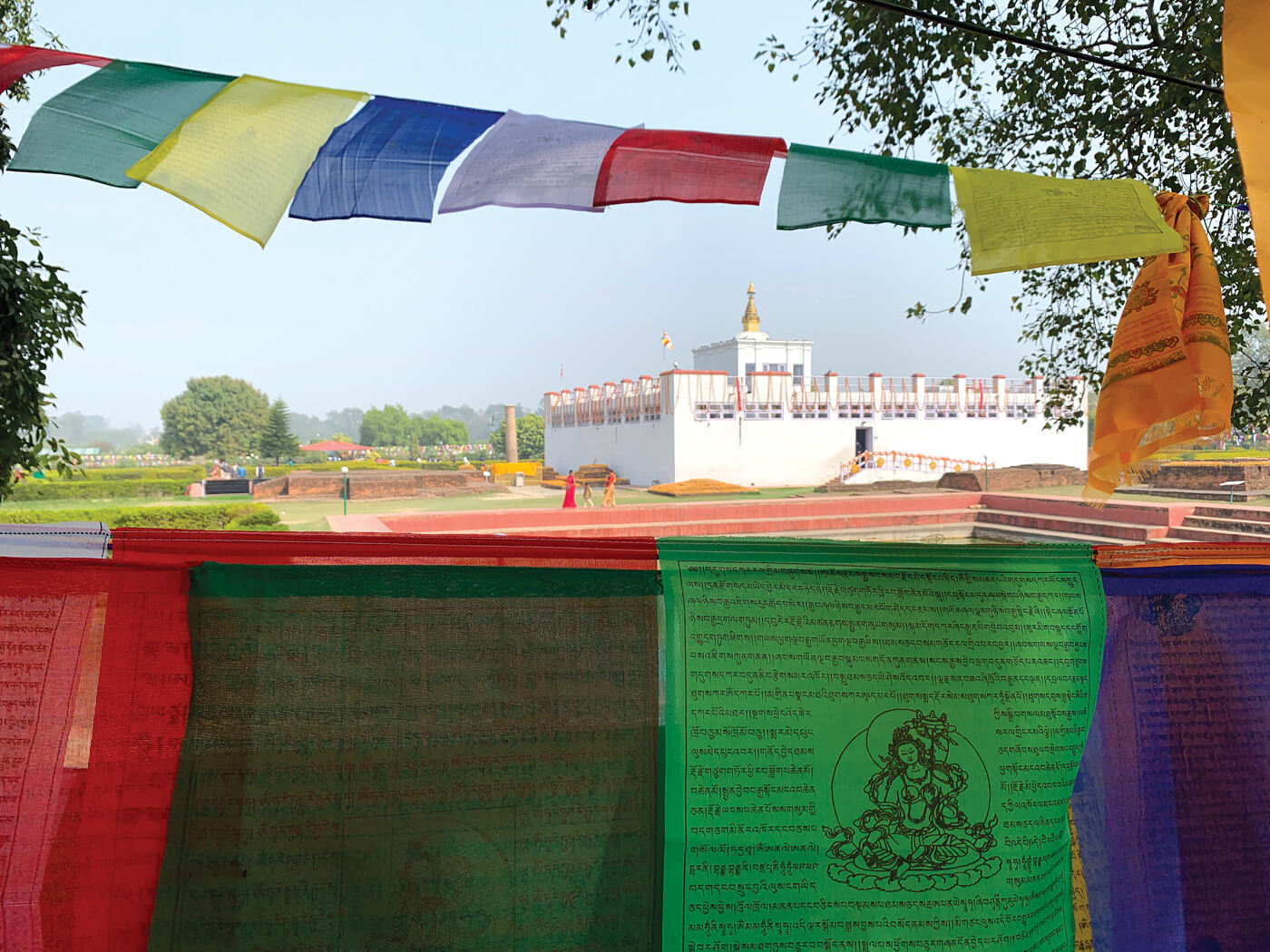The right path

It is easy to be disappointed by Lumbini. Scruffy, dusty and unbearably hot this time of year, it looks from the outside like a desolate construction site.
More than 1.5 million pilgrims from all over the world will visit Buddha’s nativity site this year, honouring his teachings of compassion and impermanence. This figure is likely to grow as the new Gautam Buddha International Airport nearby brings direct flights from Asian cities from next year.
Read also: U Thant, Kenzō Tange and Lumbini, Kunda Dixit
Buddha Jayanti, on Saturday 18 May, is an annual reminder of the decades of political neglect and corruption that have prevented Nepal from taking full advantage of its most important pilgrimage site. There are few signs showing the way, visitors have to take long, hot walks, there are few facilities, and lots of ugly construction along the new highway.
But crass commercialisation, greed and abandonment of nature are all reminders of why Buddhist philosophy is still relevant today, and why it is necessary to practice and strive for.
Despite everything, the plan of the 23-hectare park designed by Japanese architect Kenzō Tange in 1972 is more or less being followed, the open spaces have sal and simal forests, the wetlands in between teem with birdlife. The World Heritage Site has a strong spiritual presence and provides corners of solitude, along with dozens of temples in the monastic zone built by Asian Buddhist countries.
Lumbini has been a place of pilgrimage for more than 2,000 years, ever since Emperor Ashoka visited and erected his famous nativity pillar. With Visit Nepal Year 2020 and the airport, Lumbini is poised to be an international destination like never before.
To prepare for it, roads are being upgraded and new hotels are coming up outside the sacred garden area. The Lumbini Museum is being re-imagined, transforming Tange’s vaulted brick cylinders into a world-class example of heritage preservation and display.
As in life, in Lumbini you see what you look for. A flower only sees flowers and a thorn sees thorns, as the song goes. There are plenty of signs of neglect and ugliness, but looking deeper we remember what the Buddha himself said: “You only lose what you cling to.”




